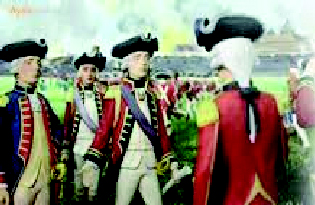
A review of history seemed to show that the short-lived British invasion of the Philippines in 1762 had paved the way for the eventual journey of the British ship Endeavour to reach Australia.
It was more than a century and a half years earlier, when British forces occupied Manila in 1762 -1764. The British invasion of Manila dovetailed the Seven Years War that spread to the colonies of both Spain and England in North and South America, India, and the Philippines.
The total force of the English fleet that stormed Manila consisted of 13 ships and 6,830 men made up of 1,500 European soldiers, 130 artillery men, 3,000 seamen and marines, 800 hundred Sepoys (Indian mercenaries) with muskets, and additional 1,400 Indian labourers.
Alexander Dalrymple, the Scot who played an important part in establishing linkages between the Philippines and Australia, was instrumental in identifying the ‘middle passage’ that Torres navigated. He prepared a Pacific map indicating the passage as Torres Strait which he based on information he gathered from the 1606 Torres report that was gathering dust at the Manila archives when discovered during the British invasion of Manila in 1762.
Dalrymple became known as an author, geographer, navigator, empire builder, and royal hydrographer. He was born in Newhailes, near Edinburgh, Scotland on 24 July 1737 to Sir James and Lady Christina Dalrymple. At 16, he joined the East India Company in India as a clerk and acquired knowledge in navigation and trade which resulted in his promotion within the company.
Four years later, he became the deputy secretary of the company’s officer at Madras, India. In 1759, he was sent to South-East Asia and visited Palawan, Sulu, Mindanao and Manila. During this trip he successfully negotiated a treaty with Sultan Alimud Din I on 28 January 1762, nine days before the East India Company decided to attack Manila.
This treaty opened the Sulu Sultanate to British trade and eventually, the cession of the island of Balambangan to the East India Company. Dalrymple was in Mindanao when the British forces invaded Manila during the first week of 1762.
Unaware of what was going on in Luzon, he advocated in a detailed plan, dated 23 November 1762, the British conquest of the southern Philippines. He also endorsed the English takeover of the equally rich island of Luzon, considered by him as of great agricultural and commercial potentials. This commercial interest in the southern Philippines became the dominant reason why the East India Company participated in the invasion of Manila as a result of the Seven Years War in Europe.
A year after the British stormed and occupied Manila, Dalrymple arrived in the capital as representative of the East India Company. Earlier in that year, the Seven Years War that brought the English to the shore of the Philippines ended, but news of the armistice that was signed in Paris reached Manila only one year later and it took several months before the official transfer of administration from the British to the Spanish authorities was made. When Dawsone Drake, the British Governor of the Philippines resigned from his post.
Dalrymple was appointed by the East India Company to supervise the turning-over of the administration of the city to Spanish Jurist, Simon de Anda, who became the acting Governor-General of the Philippines. When Dalrymple returned to London, he was recognised for his accomplishment in the Philippines.
In 1767, he published his Historical Collection of Voyages and Discoveries in the South Pacific Ocean with the chart of the South Pacific, indicating the 1606 Torres’ passage through the Strait between New Guinea and Australia. It is strongly believed that when the Cook expedition sailed to the Pacific, leading to the ‘discovery’ of Australia, Captain James Cook and Joseph Banks were already in possession of information from Dalrymple about the Torres voyage.
In 1774, a French translation of Dalrymple’s work was published containing a letter of Dalrymple to Hawkesworth stating that he had given Banks materials about the discoveries in the Pacific before 1764. Included were the maps Dalrymple had drawn of those discoveries. These were the same maps included in the English version of his book published in 1767. Dalrymple also stated that he marked the passage with the name of Torres Strait, based on the Arias memorial which, in turn, was based on the Torres account of 1607 that the British found in Manila archives in 1762.
The Dalrymple information obtained from Manila during the British occupation therefore, determined the course taken by the Endeavour in passing through the passage between New Guinea and New Holland, now Australia.










Leave a Reply